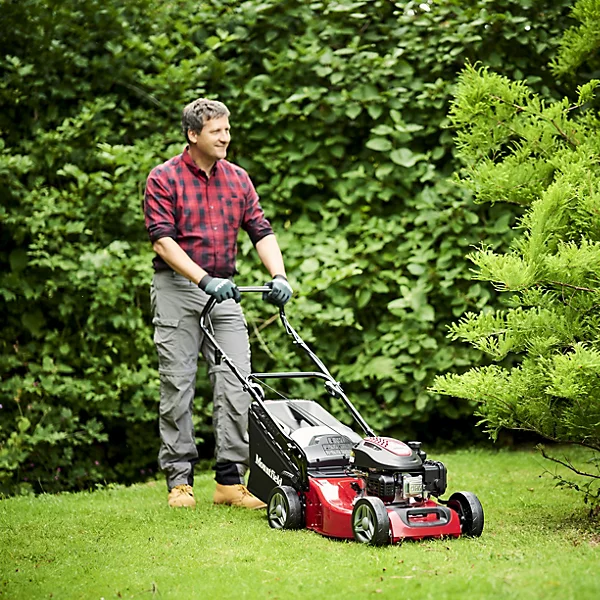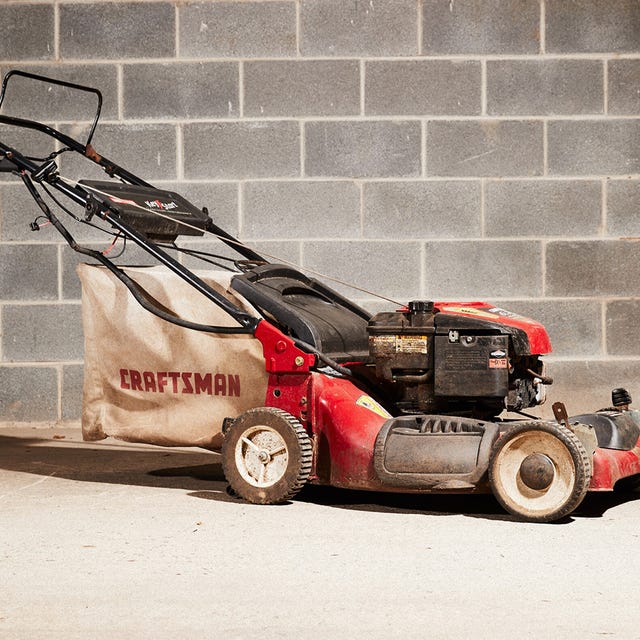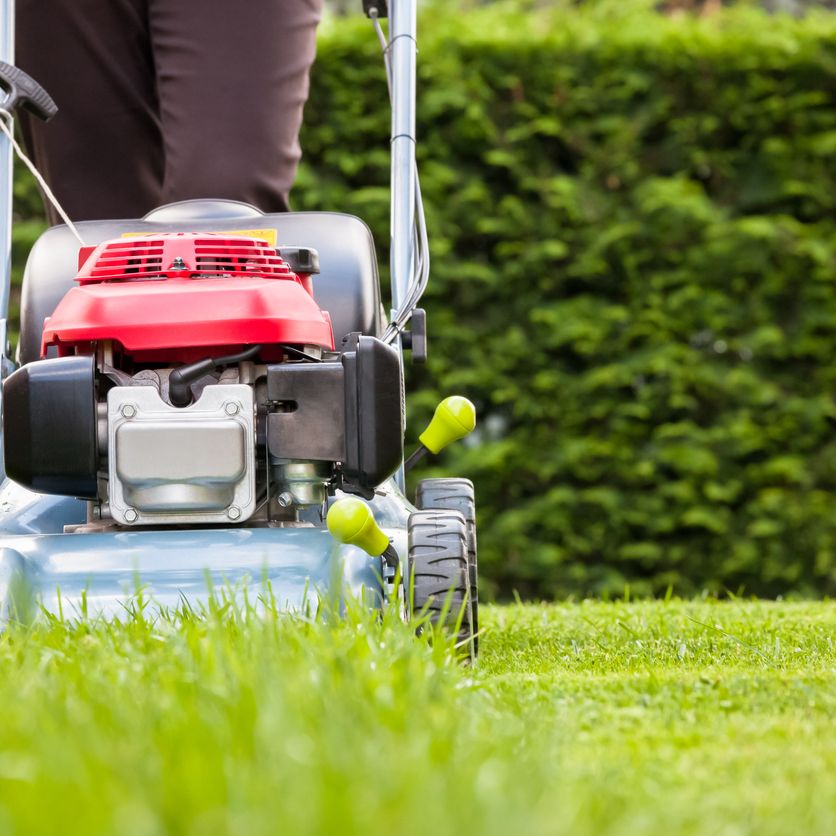Common Reasons for Post-Winter Starting Issues
If your lawn mower won’t start after winter, a few common issues might be the cause. Stale fuel is a typical culprit for mowers that have sat unused for several months. Over the winter, fuel can degrade and lose its combustibility, making it difficult for the engine to start. Another common problem is the battery. Lawn mower batteries may lose their charge when not in use for extended periods. Moisture accumulation and corrosion of the battery contacts can also prevent the engine from starting. Spark plugs are another potential issue; they can become dirty or corroded during the off-season. Lastly, oil viscosity changes with temperature. Thickened, old oil may not lubricate the engine parts as needed for a smooth start. To avoid such problems, it’s crucial to perform proper maintenance before storing your mower for winter.
Signs of Stale Fuel in Your Lawn Mower
Knowing the signs of stale fuel can save you time and frustration. Watch for these indicators:
- Fuel Color Change: Fresh fuel is typically clear or has a light yellow hue. If it turns brown, it’s stale.
- Strange Odor: Stale fuel often has a sour or unpleasant smell, unlike fresh gasoline’s typical odor.
- Engine Trouble: If the mower is hard to start or doesn’t start at all, stale fuel may be the cause.
- Visible Gumming: Look for sticky residues, which are products of fuel degradation, around the fuel tank or carburetor.
If you notice any of these signs, it is likely that your lawn mower won’t start after winter due to stale fuel. It’s essential to address this problem promptly to prevent further issues.
Steps to Drain and Replace Stale Fuel
If your lawn mower won’t start after winter, stale fuel could be the problem. To fix this, follow these steps:
- Safety First: Always work in a well-ventilated area away from any flames or sparks. Shut off the mower completely.
- Drain Old Fuel: Locate the fuel tank and carefully drain the stale fuel into an approved container.
- Dispose Properly: Take the old fuel to a recycling center or hazardous waste disposal facility.
- Clean the Tank: Wipe the inside of the tank with a clean cloth to remove any residue.
- Refill with Fresh Fuel: Use new, fresh fuel from a reliable source. Don’t use leftover fuel from the previous season.
- Check the Fuel Line: Ensure the fuel line is clean and free of blockages.
- Replace Fuel Filter: If your lawn mower has a fuel filter, now is a good time to replace it.
With fresh fuel in your lawn mower, it stands a better chance of starting smoothly after winter. This step is crucial in eliminating starting issues related to stale fuel.
Importance of Fresh Fuel for Lawn Mowers
Using fresh fuel for your lawn mower is crucial. It ensures a reliable start and optimal engine performance. During winter, your mower’s fuel can degrade and cause starting problems. Fresh fuel means better combustion, which is key for engine health. Here’s why fresh fuel matters:
- Prevents Engine Wear: Stale fuel can cause engine wear and tear. Fresh fuel keeps the engine clean.
- Enhances Performance: Fresh fuel helps your lawn mower run smoothly and efficiently.
- Reduces Maintenance: Using fresh fuel can cut down on maintenance needs and costs.
Make sure to fill up with new, high-quality fuel for the coming mowing season. Remember to avoid using last year’s fuel. It might have gone stale in the can. For the best care of your lawn mower, consider getting fuel from a garden machinery supplier. They usually stock the freshest options. If the mower doesn’t start after a fuel change, stale fuel might be left in the carburetor. You may need this part cleaned by a professional to solve the issue.
What to Do If Your Mower Still Won’t Start
If your lawn mower won’t start after winter even with fresh fuel, consider these tips:
- Check the Carburetor: Stale fuel can leave residue in the carburetor. It may need cleaning.
- Inspect Spark Plugs: Dirty or damaged spark plugs can prevent starting. Replace if necessary.
- Evaluate the Battery: Ensure the battery is charged. Clean any corrosion from contacts.
- Look at the Oil: Change old or thickened oil that can hinder engine movement.
- Clear Air Filters: A blocked air filter can stifle the engine. Clean or replace it.
- Review the Fuel Line: The line could be clogged. Also, check for cracks or damage.
- Safety Switches: Mowers have safety features. Make sure all safety devices are engaged.
- Consult the Manual: Your mower’s manual may have troubleshooting tips specific to the model.
If these steps don’t solve the issue, it may be time to seek help from a professional. They can pinpoint and fix complex issues. Remember, dealing with lawn mower repairs safely is crucial. If you’re unsure of any steps, professional assistance is the best choice.
Maintenance Tips to Prevent Future Winter Starting Problems
Preventive maintenance is key to ensuring your lawn mower starts smoothly after winter. Follow these simple tips to avoid common issues like stale fuel and battery problems.
- Stabilize the Fuel: Before winter storage, add a fuel stabilizer to the tank. This prevents the fuel from degrading.
- Run the Engine Dry: After adding stabilizer, run the mower until it stops. This ensures no fuel remains in the engine.
- Disconnect the Battery: Remove the battery and store it in a cool, dry place. Charge it periodically over winter.
- Change the Oil: Replace old oil with new, which helps protect the engine’s internal parts.
- Clean or Replace Spark Plugs: Dirty spark plugs can cause starting issues. Clean or replace them as needed.
- Lubricate Moving Parts: Apply lubricant to all moving parts to prevent rust and corrosion.
- Cover the Mower: Use a breathable cover to protect your mower from dust and moisture.
By implementing these maintenance tips, your lawn mower will be well-prepared for the next cutting season.
When to Seek Professional Help for Your Lawn Mower
Sometimes, despite your best efforts to troubleshoot, your lawn mower might still face issues that are too complex to handle on your own. In such cases, seeking professional help becomes necessary. Here are some scenarios when it’s advisable to call in the experts:
- Persistent Starting Issues: If your lawn mower won’t start after winter even after trying all the troubleshooting steps, it may have an underlying issue that requires professional attention.
- Complex Mechanical Failures: Problems like internal engine damage or failures in the transmission system are best handled by professionals.
- Electrical Issues: If there are signs of electrical faults such as non-responsive start switches or erratic behavior of the mower, these could indicate deeper electrical issues that need expert handling.
- Severe Fuel System Problems: If problems persist even after cleaning the carburetor and replenishing with fresh fuel, the fuel system might need a more thorough examination or repair which should be done by a technician.
- Safety Concerns: If at any point you feel that continuing to troubleshoot could be unsafe, or if the mower shows signs of potential safety hazards, it is best to consult with a professional.
Professionals have the tools, training, and parts to diagnose and fix issues more comprehensively. While it might cost more upfront, professional repair can save time and extend the life of your lawn mower, potentially preventing further issues during the cutting season.
Preparing Your Lawn Mower for the Cutting Season
Proper preparation can make your lawn mower start smoothly after winter. Here’s how you can prepare your mower for the upcoming cutting season:
- Check All Parts: Inspect your mower for any loose, damaged, or missing parts. Fix them before starting.
- Clean the Mower: Remove dirt, grass clippings, and debris from the mower’s undercarriage and blades.
- Sharpen Blades: Dull blades make cutting tough. Sharpen them for a clean cut.
- Lubricate Where Needed: Apply oil to moving parts to ensure they work smoothly.
- Check Tire Pressure: If your mower has tires, ensure they are properly inflated.
- Test the Controls: Make sure all levers and controls function correctly.
- Connect the Battery: If you disconnected it for winter, reconnect the battery.
If you’ve followed these steps but your lawn mower won’t start after winter, review the earlier troubleshooting tips again. These include checking for stale fuel, spark plug issues, and battery problems. Remember that regular maintenance is key to a hassle-free start. Each spring, make it a routine to prepare your mower, so you’re ready to go when the grass starts growing.



